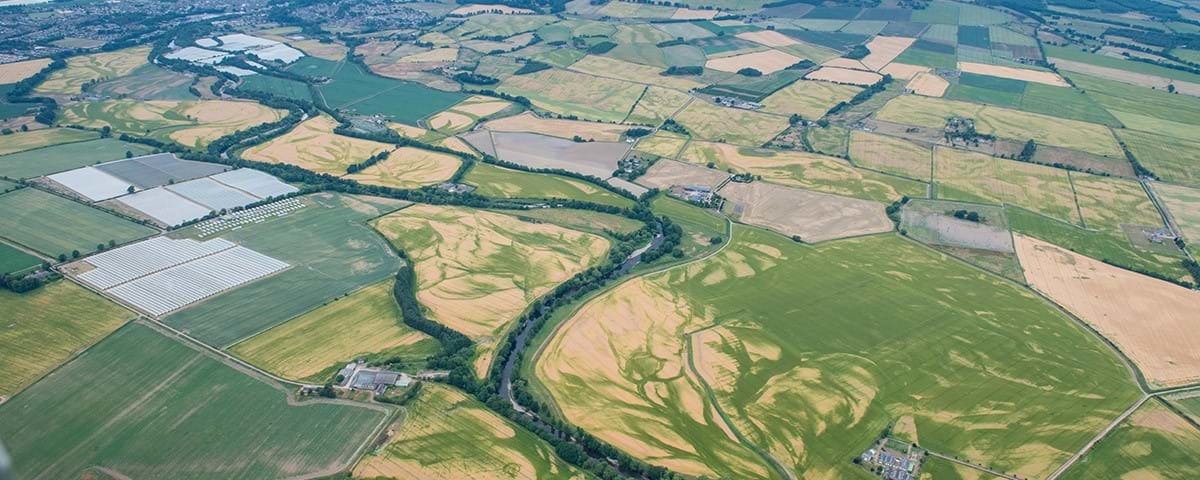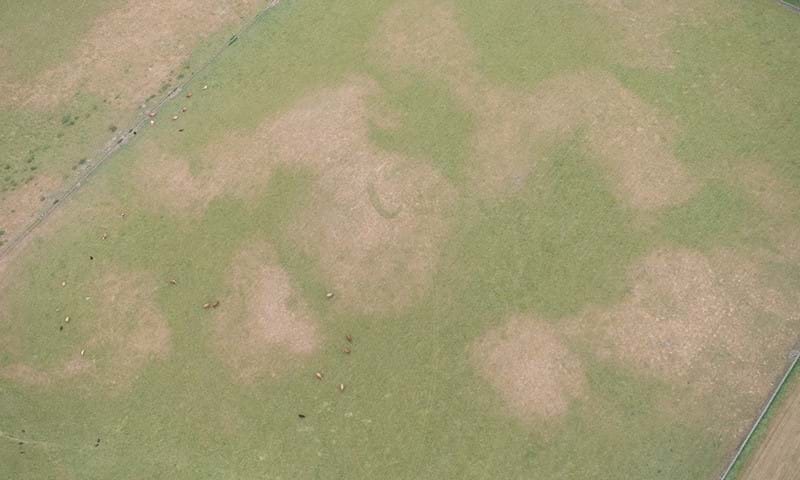
SCOTLAND’S recent heatwave has revealed new evidence of ancient settlements.
Due to a long spell of dry conditions, crop marks showing historic communities and Roman fortifications have been visible from the air.
They’re otherwise hidden under the plough soil, and are now being documented by Historic Environment Scotland.
HES is the public body charged with caring for, protecting and promoting the country’s historic environment.
Their aerial survey team have spotted Iron Age souterrains in the Borders – a rare find in this part of the country – and also a Roman temporary camp.
The camp was discovered within the known Roman complex of sites at Lyne, near Peebles, and adds to the significance of the complex, which already includes two forts and two additional temporary camps.
The extensive marks form as the crops respond to dry conditions and have allowed the team to document known sites that have not been visible for many years.
Iron Age burials, Neolithic pits and prehistoric settlements are all marked out in the fields, against a backdrop of long-infilled rivers and streams which tell the story of Scotland’s landscape.
“Aerial surveys of Scotland have been carried out since the 1930s, with each year usually adding a little more to the patchwork of our knowledge,” says Dave Cowley, Aerial Survey Project Manager.
“We depend on dry years to bring out the buried remains in the crops, so we are currently out hunting for new clues from the skies while the good weather lasts.
“The conditions this year are showing us many sites that we knew were there, but may not have seen in recent damp summers, as well as revealing new archaeological sites that add to our ability to see into the past to tell Scotland’s story.”
Historic Environment Scotland’s aerial survey team search Scotland from the sky in order to understand and record Scotland’s historic environment, and have discovered and recorded more than 9,000 buried sites to date.

Enjoy the convenience of having The Sunday Post delivered as a digital ePaper straight to your smartphone, tablet or computer.
Subscribe for only £5.49 a month and enjoy all the benefits of the printed paper as a digital replica.
Subscribe